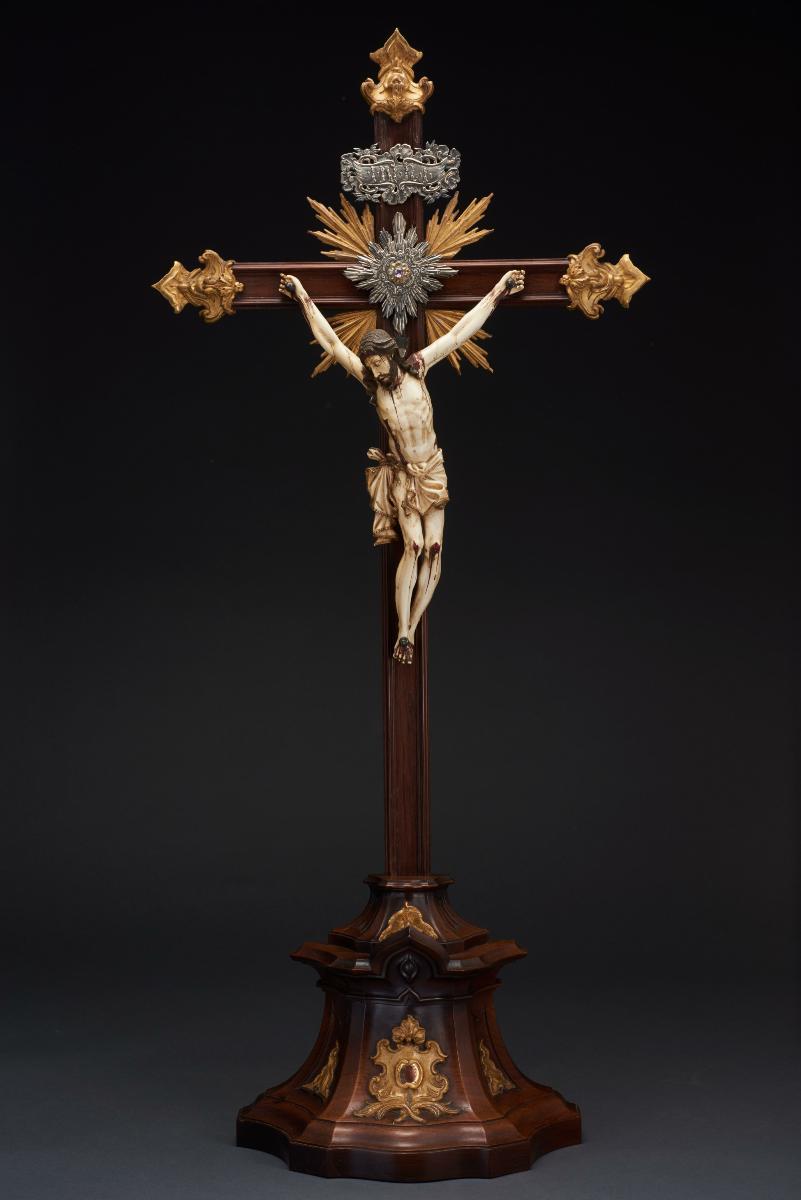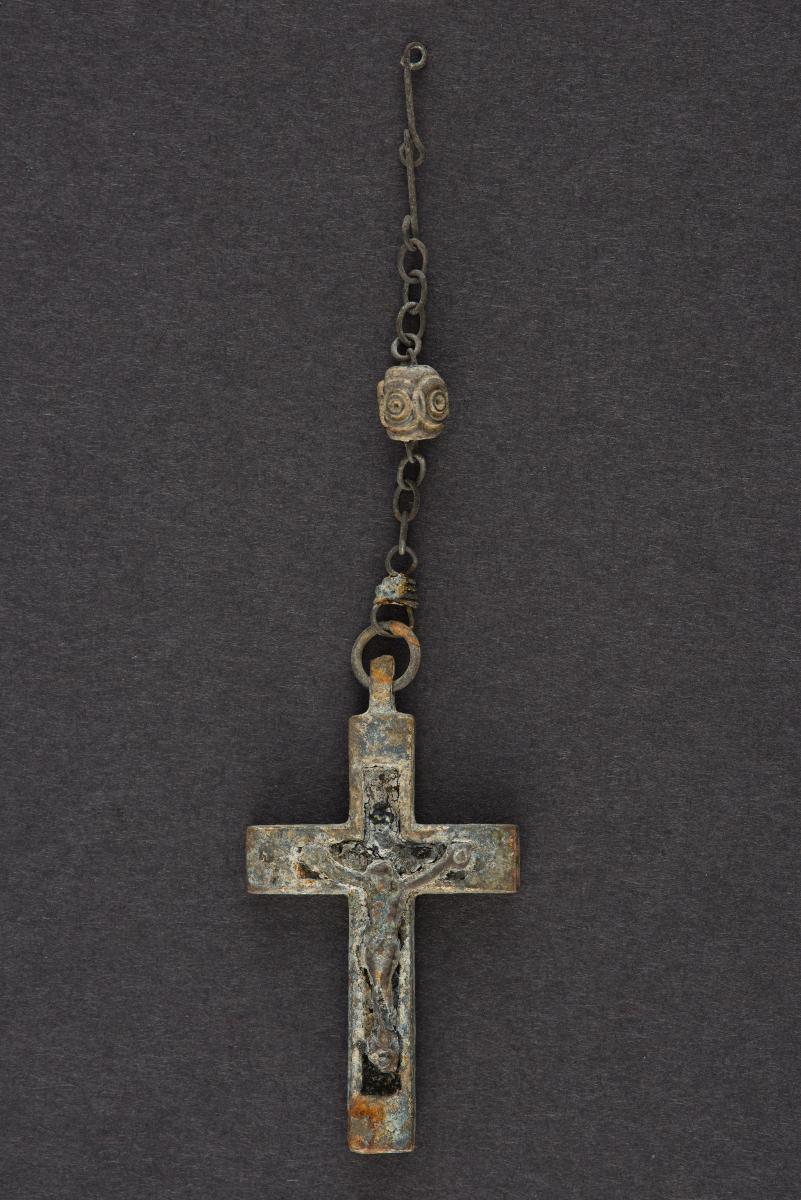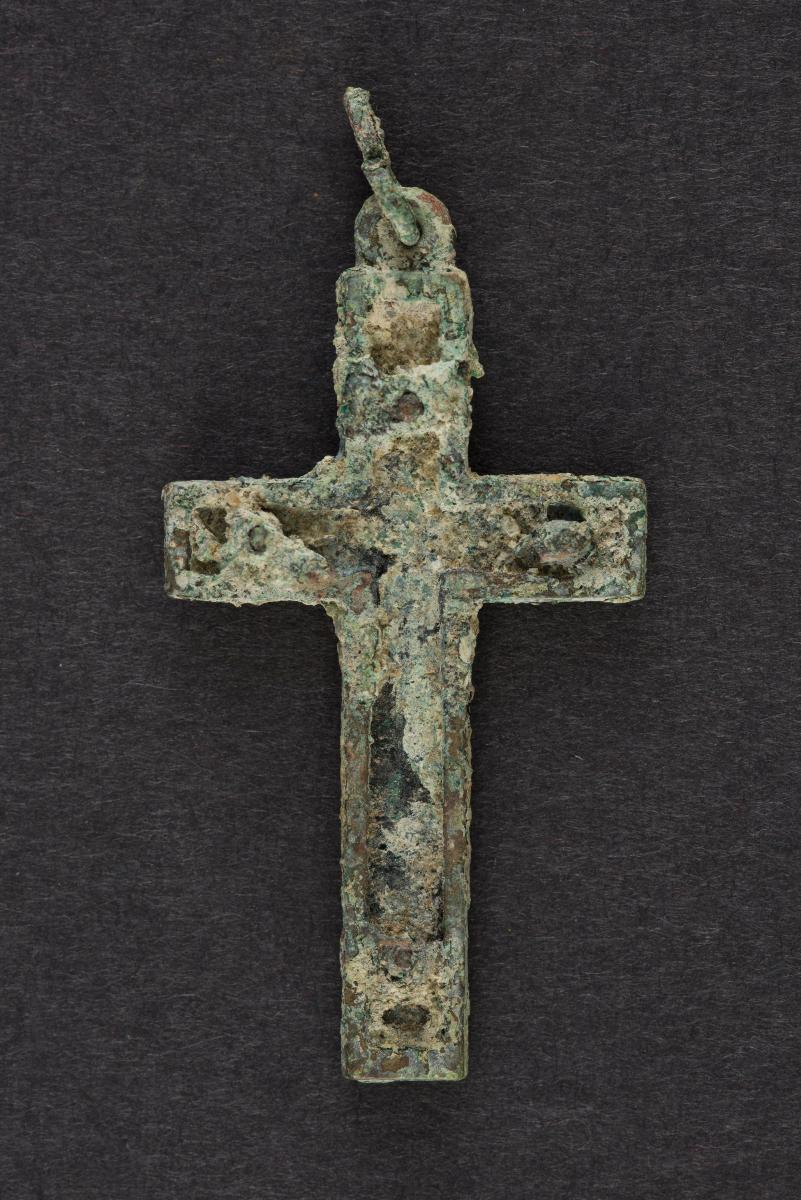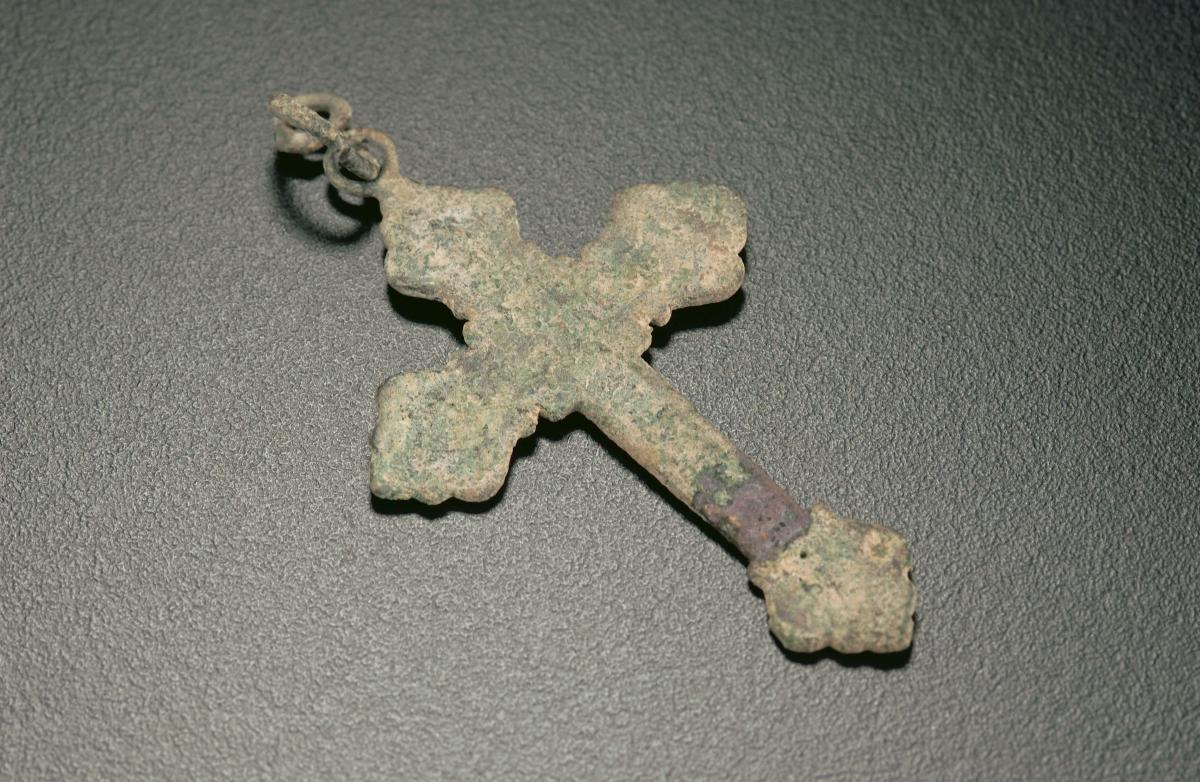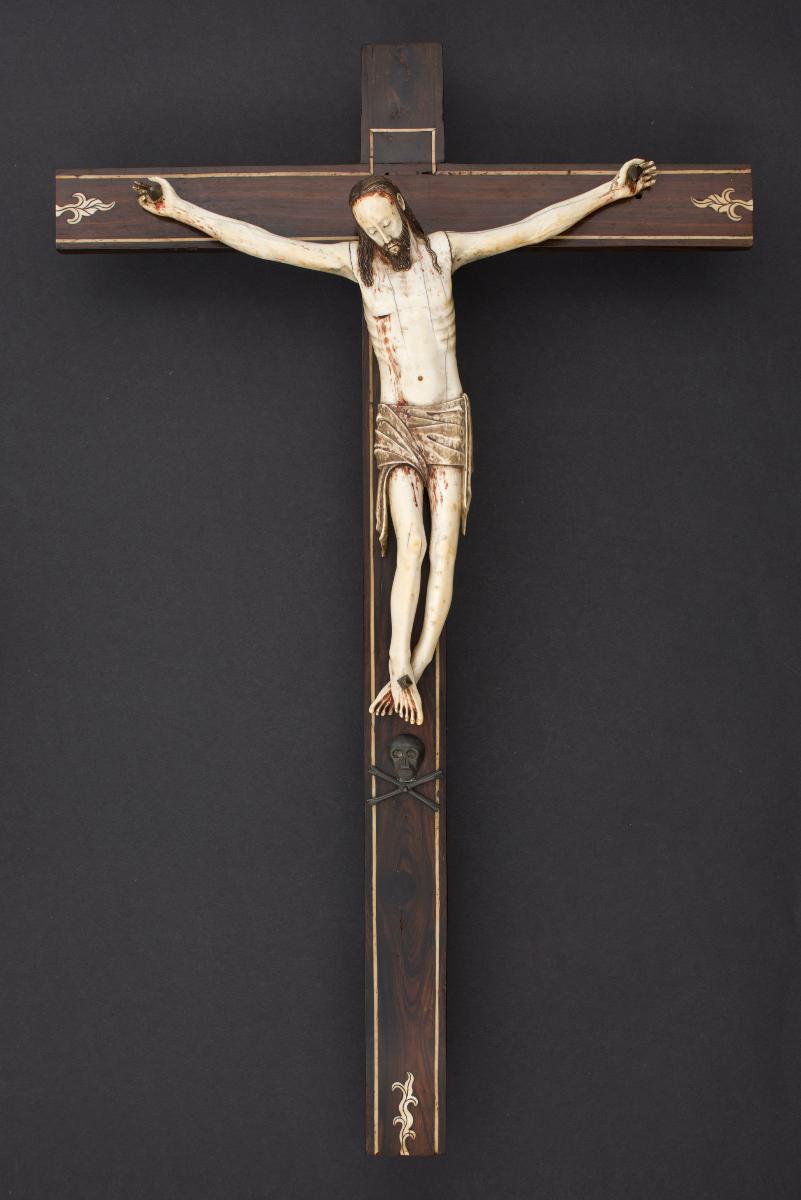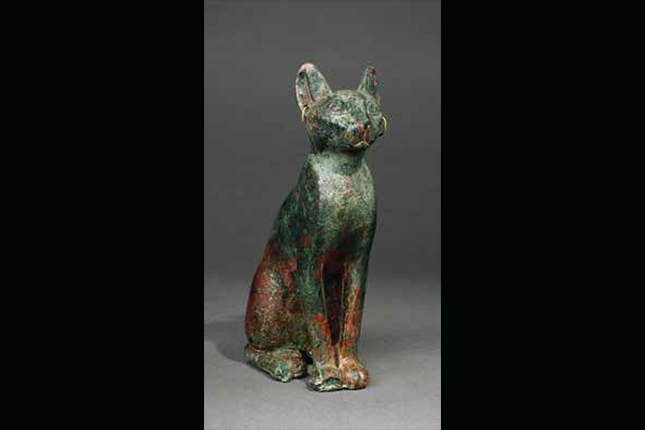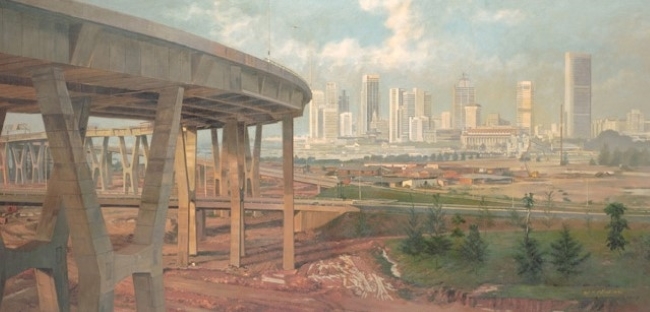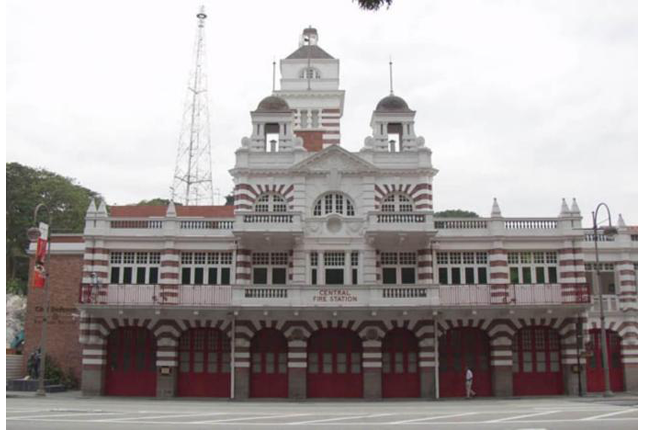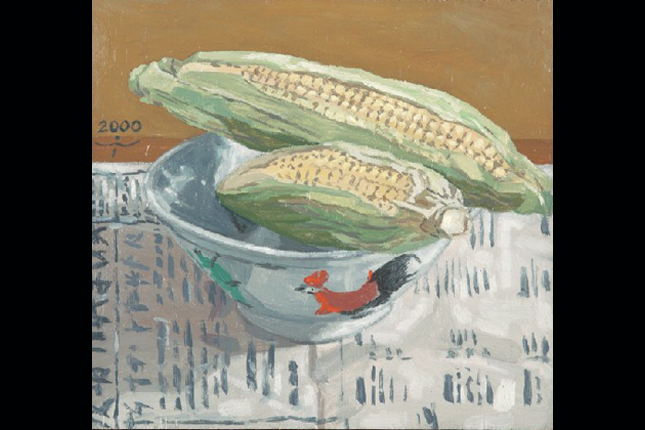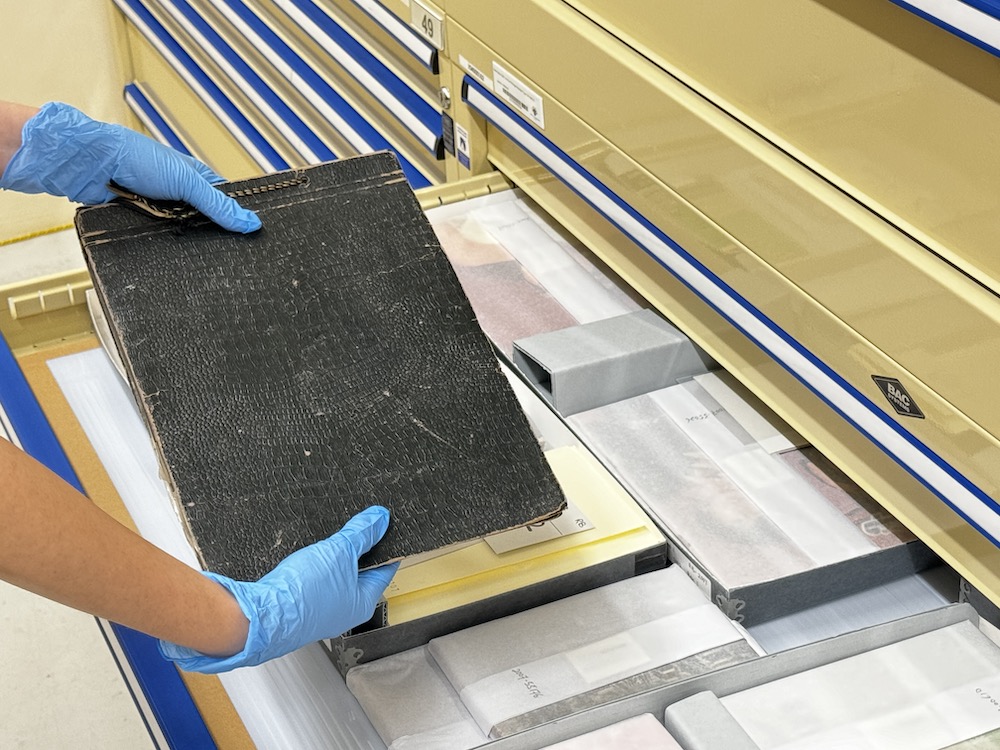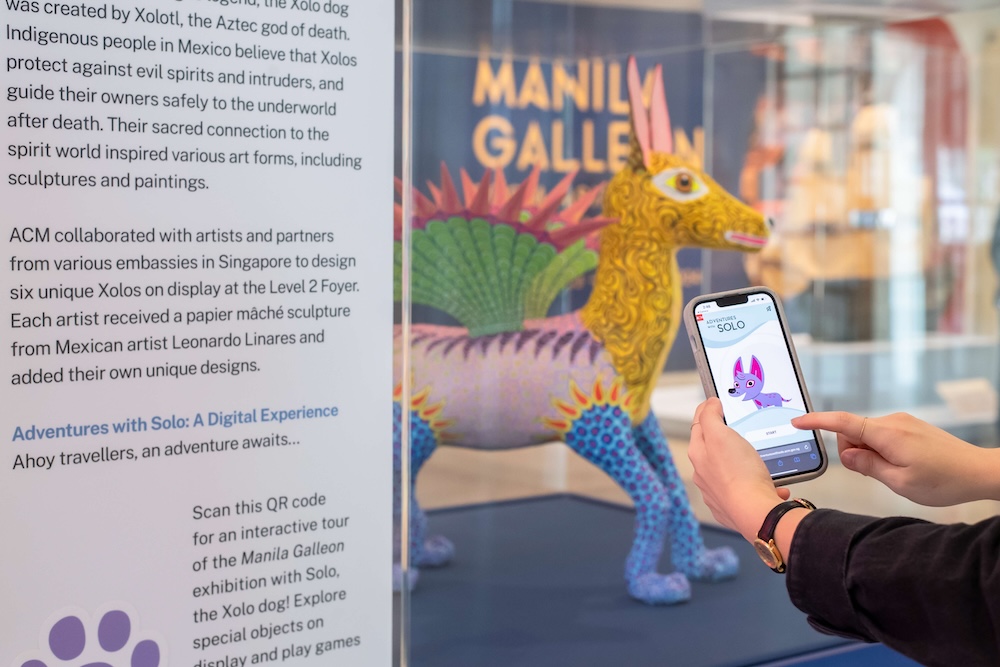The crucified Christ shows great sensitivity to emotion and anatomical detail. The thick wavy long hair and the detailing and drapery of the loin cloth suggest that the work was carved in Goa, India, probably in the 18th century. The arms and parts of the loin cloth were made seperately and attached to the body, a technique often used on European ivory figures. The cross with silver mounts and inset gems may have been carved in Portugal and attached later. The crucified Christ was a central theme in Christian art around the world, and lustrous white ivory was an ideal material for representing the human figure. Most of devotional Christian images made in India were exported to Europe as luxury goods or as gifts to European churches.




